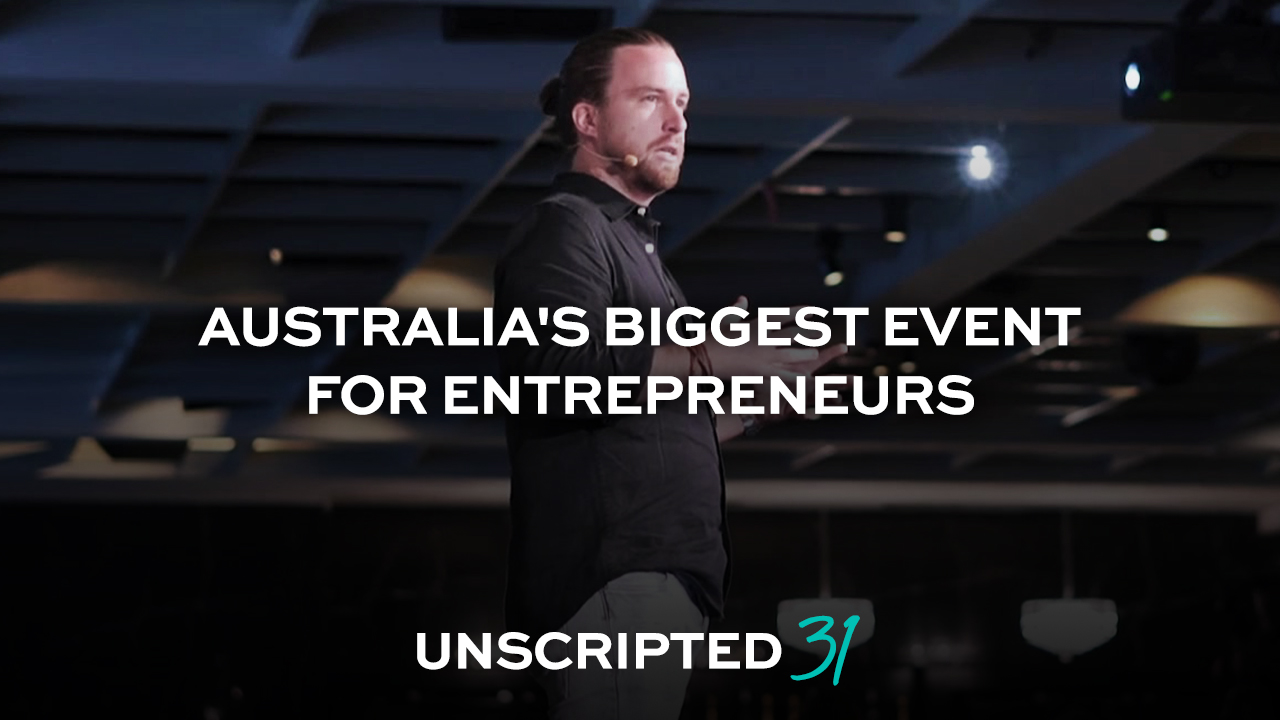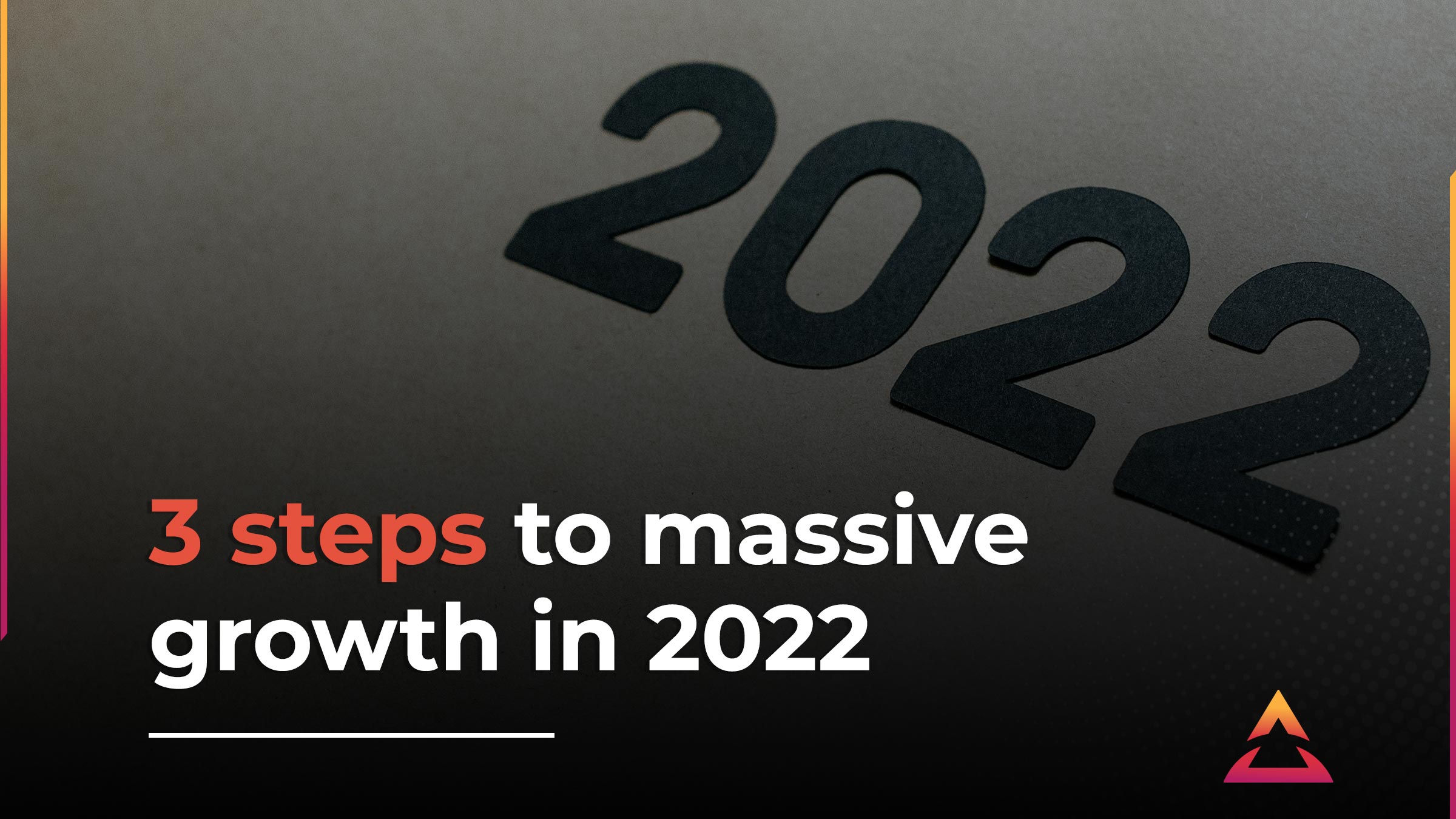This is how great businesses grow to 8-figures

What do you think is the biggest mistake a business owner can make as their business goes up the growth curve, past the million-dollar mark, and towards 8-figures?
Not having a business plan? Hiring too many people too fast? Neglecting market research or ignoring the competition?
Think again. Yes, these are all incredibly important to have under control, but they’re not the biggest mistake you can make.
The most fundamental mistake a business owner can make is falling into old patterns and managing their rapidly growing business in the same style as they did in the early days of the venture. The reason for this isn’t necessarily a capability gap, but rather the business owner has habitualised the behaviours that were once effective. Now, the business is at a different stage and they simply haven’t consciously reassessed what is working, what is not, and what needs to change.
Every business goes through five stages of growth.
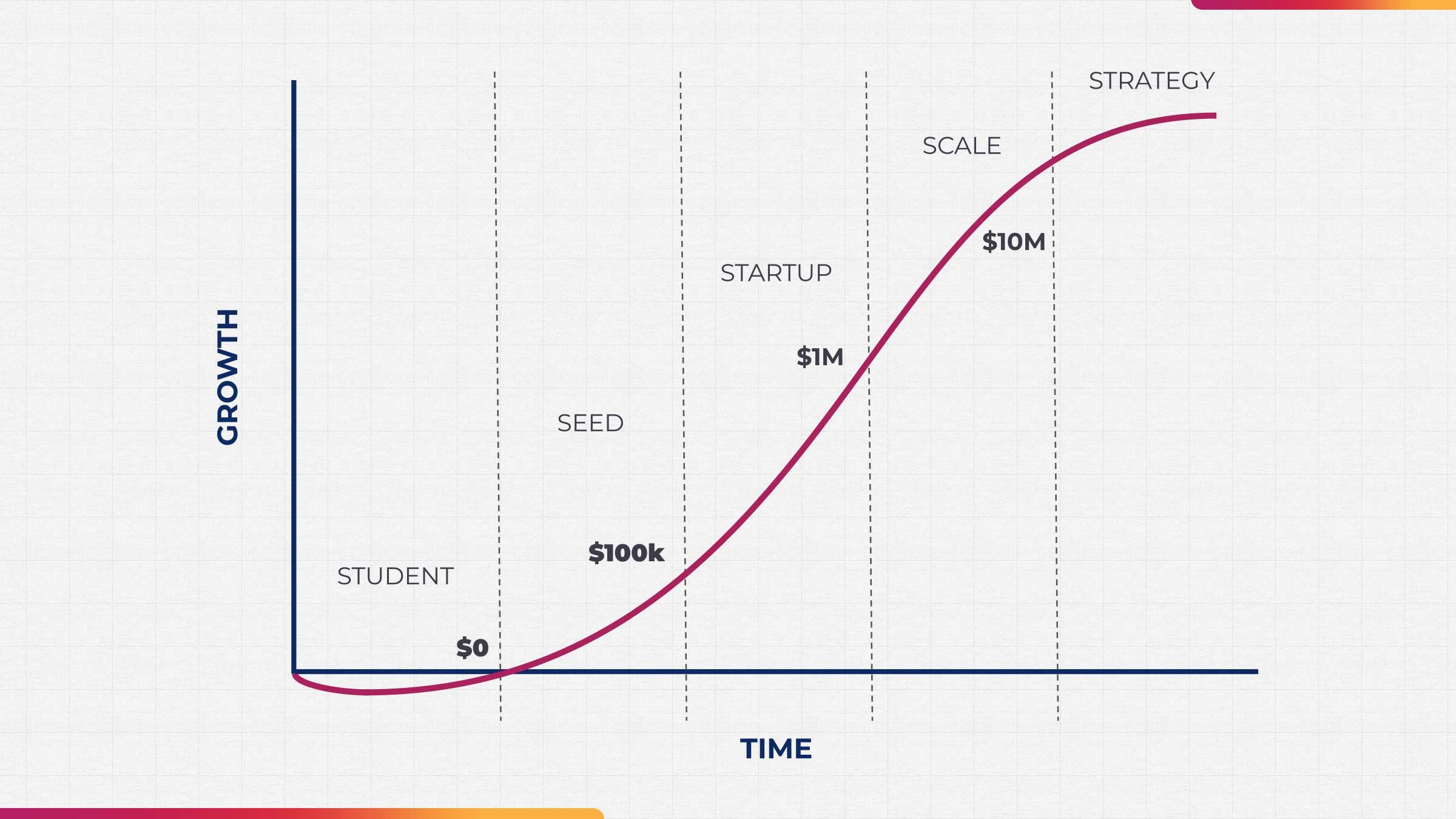
In this blog, I’ll specifically address three core stages: Seed, Startup, and Scale. Because these are the stages that every business owner needs to go through to get to 8-figures.
The Seed Stage
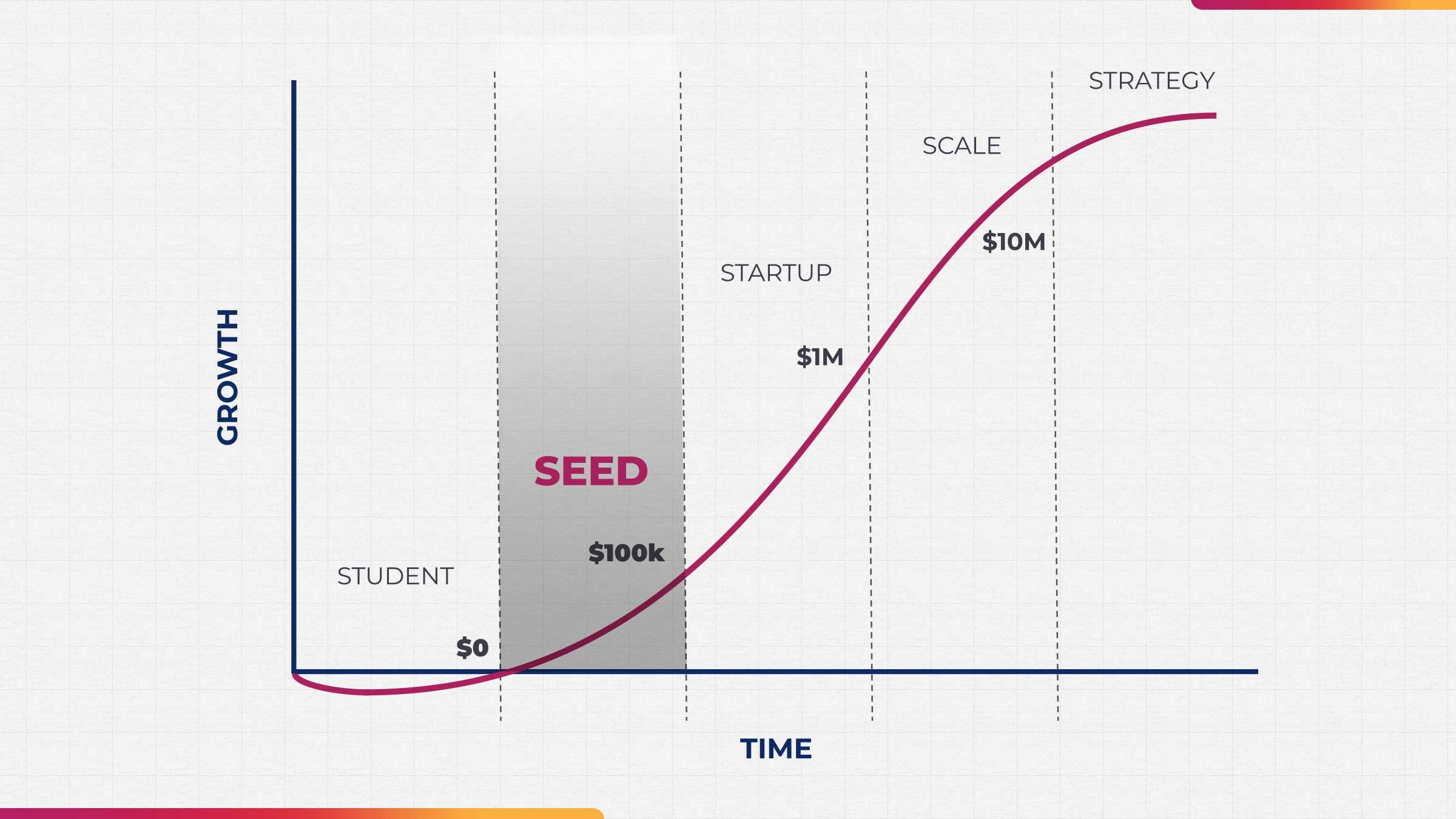
Revenue: $0 - $100,000
Key Focus Area: Product To Market Fit, producing something that addresses a consumer need
Challenges:
- Creating something from nothing
- No traction yet
- Friction between building a product or service, marketing it, and delivering it
In the Seed Stage, the business is in its infancy. The business owner is an explorer - exploring the hearts and minds of your consumer, and your ability to develop a product or service that addresses that consumer segment.
Your main focus in the Seed Stage needs to be product to market fit, on ensuring that the product or service you’ve developed is something that people genuinely want.
And while product to market fit is important in the Seed Stage, it becomes even more important the larger the business becomes. The most common misconception around product to market fit is, “I am doing strong revenues and therefore must have a product to market fit.”
This is not true.
A business may be doing strong revenues, and may have product to market fit, but the two don’t necessarily correlate. You can build a business north of $10 million revenue without great product to market fit, and with sheer will instead, but this is far from ideal.
The signs of lack of product to market fit
- High exertion marketing
- Low word of mouth referrals
- Long sales cycles
- Low organic customer growth
- Low repeat customers
- High return rates
- High complaint rates and poor customer feedback
How to improve your product to market fit
Start with the consumer problem you solve and work back from there. Don’t be a solution looking for a problem.
Make sure all products and services are developed and refined in concert with your consumer. When building a new product or service, make sure you ask your customer base or target market:
- Do they have a problem?
- Why is it a problem for them?
- How would they best like it to be solved?
Involving your consumer in product developments and refinements is never as simple as “ask them what they want and give it to them.” This approach never works. It is too simplistic, and the end result lacks impact.
Do not gain consumer insight to replace your own innovative thinking, but rather to inform your innovative thinking. Ask them what they want and then build something they never would have imagined.
The Startup Stage
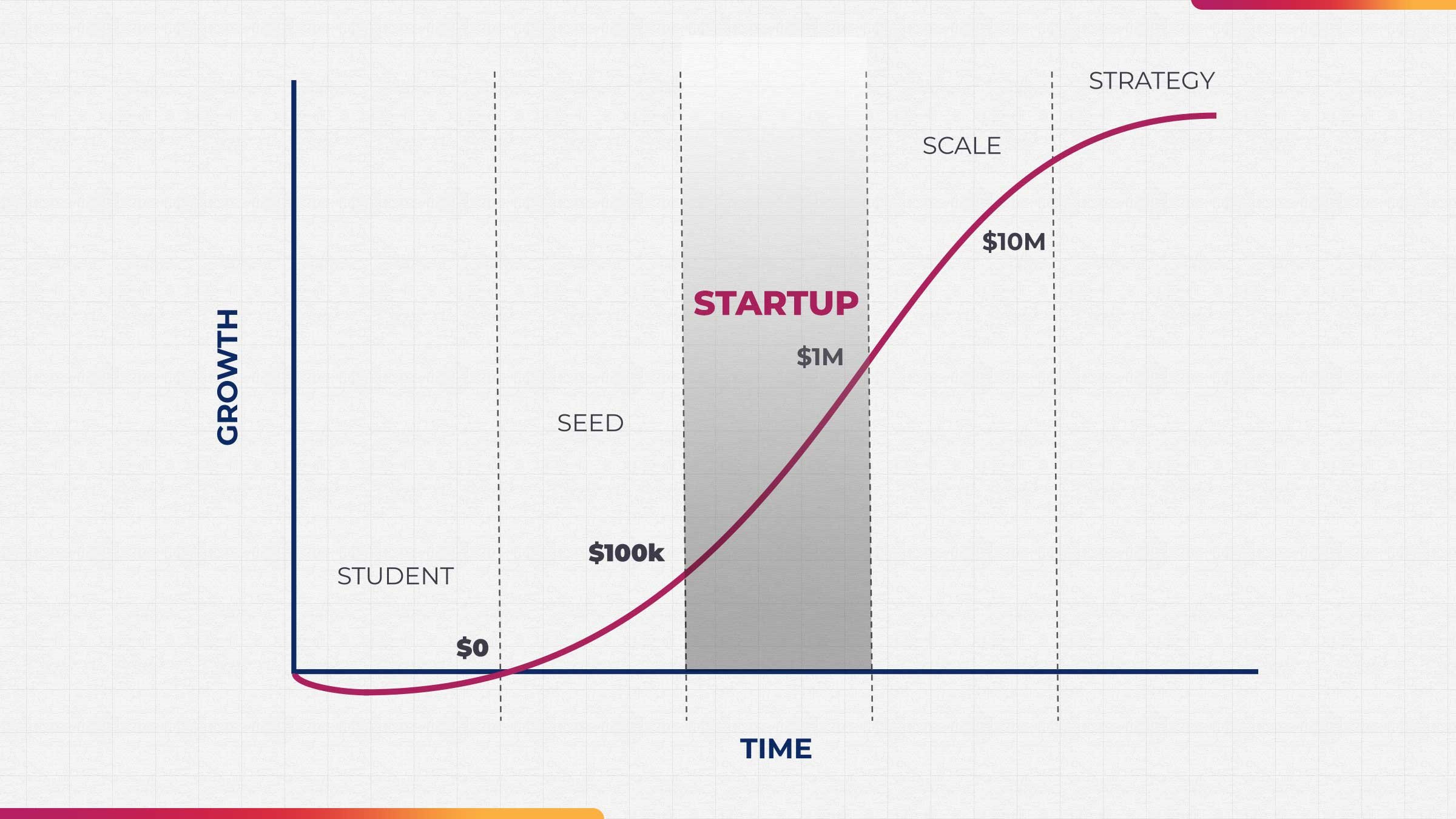
Revenue: $100,000 - $1,000,000
Key Focus Area: Drive revenue and cash generation
Challenges:
- You’re spread too thin doing everything
- Resources (money, time, personnel) are very limited
- It is incredibly tiring when done for an extended period of time
The Startup Stage is enjoyable in the beginning. There is a camaraderie that exists between the team, and maybe even the small but growing consumer base. The business is still relatively new, showing promise, and now growing in the right direction. This is a good stage for the business owner, as you feel your business start to grow into itself for the first time. The excitement from seeing this fuels us to do the work necessary in the Startup Stage.
On the other side of the same coin, the Startup Stage is exhausting - particularly when you live there for a long time (and most business owners do).
It is exhausting because you are the one doing everything by way of breadth and depth.
In the Startup Stage, you hire the people you can afford. Think of people this way: you either pay in money, or you pay in time. If you’re unable to pay salaries, then you will pay in management time, leadership time, training time and coaching time. This is inevitable in the beginning.
However, it does mean that you are still the one doing everything or overseeing everything closely. And this isn’t sustainable, particularly as the business grows and there is more and more to do. You will burn out, become less effective, and the businesses will simply not have the structure or the momentum it needs to grow to the next level.
As a result, the key focus in the Startup Stage needs to be revenue and cash generation.
Your main priority needs to be growing the revenues of the company to a point where you can start to invest more capital into building a sustainable business. That includes more experienced people, a bigger team, product improvements, and the right technology.
Focusing on revenue generation does mean that there will be times where we, as the entrepreneur, need to be okay with operational imperfection. This is not a period of consolidation, this is a period of driving growth to ensure we can get the revenues to build a great company.
The Scale Stage
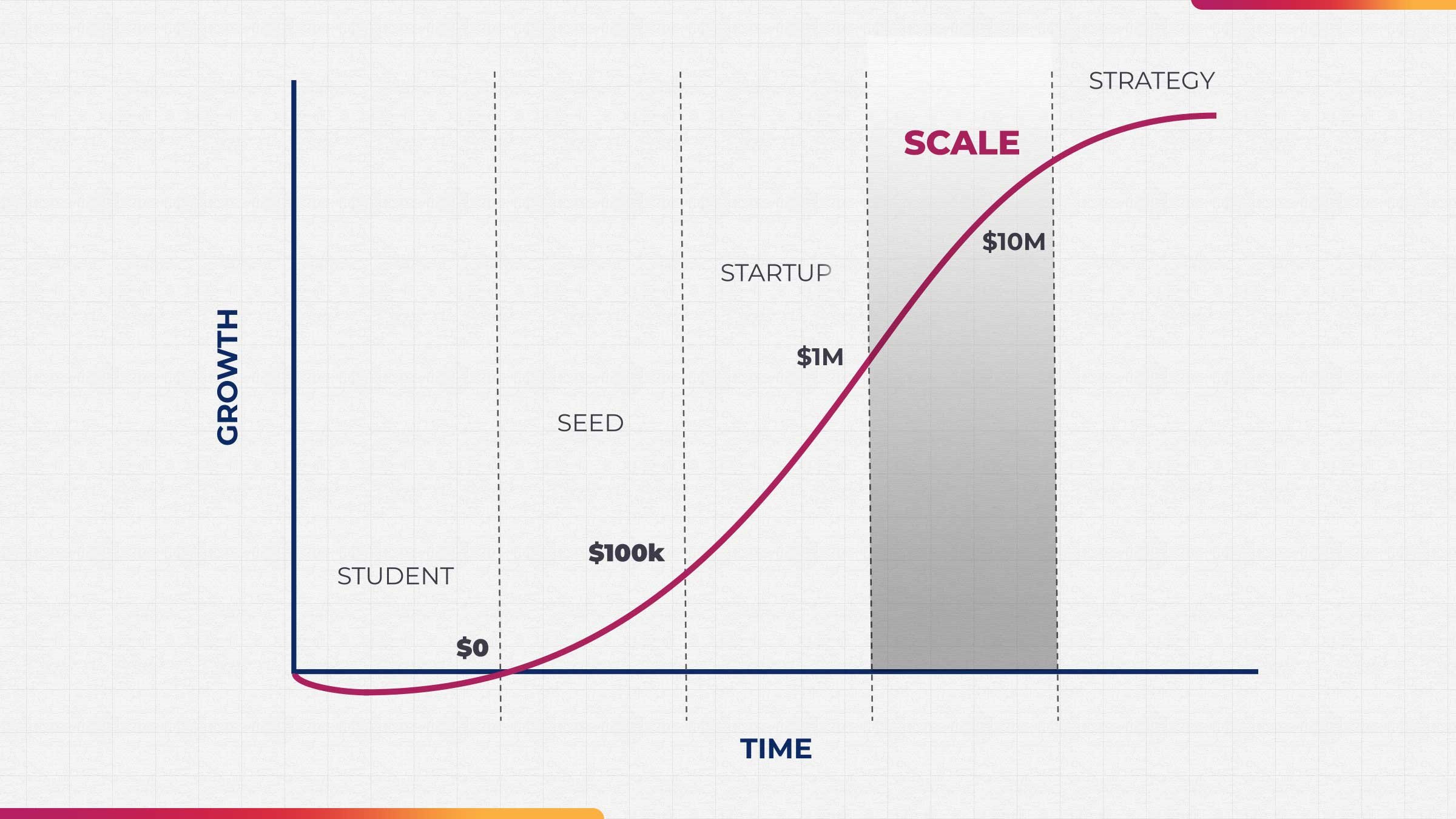
Revenue: $1,000,000 to $10,000,000
Key Focus Area: Building structure into the company
Challenges:
- A lack of structure to support the growing operations of the business
- The business has outgrown the natural talent of the entrepreneur, the entrepreneur now needs to develop their business capability
- Prioritising which problems to focus on and what to do next
One of the most common mistakes that business owners face in the Scale Stage is that they keep paying startup wages. Remember, you either pay with money or you pay with time.
Even though you now have the revenues and cash flows to afford more experienced and senior people, you have continued to advertise jobs offering startup wages. You will often do this simply out of habit.
For example, in the startup phase, you might have brought on an entry to mid-level marketer to support you to get the business off the ground. You still would have needed to be operationally involved, but that’s what you needed to do to grow the revenues of the company at the time.
Now, however, the business has grown substantially in revenue, but you’ve still got that entry to mid-level marketer in the team with you directly driving the marketing function, on top of everything else that’s also now on your plate. Bringing on a more senior marketing professional would alleviate you from the function, and enable it to operate and grow without your direct involvement - so much so that the revenue and profit growth will cover the extra money you’ve invested in hiring a more senior member of the team.
The style and the nature of your business can change quite quickly and most people in your team won't be able to keep up.
In the Scale Stage, you have more of a foundation. You have foundational revenues, team, and traction. However, while everything has grown, operationally the business has not caught up.
You’ve gotten here simply by doing more of what you always did. You worked hard at getting more marketing out of the door, got in front of more people, sold more products, employed more people in a hurry and delivered more products while managing cash flow in a haphazard way.
To keep up with the growing demands of the business, you simply work harder each step of the way. You are still deeply entrenched in the business and while the revenue growth feels good, you know that without your constant supervision, the business would not sustain itself.
The problem with this approach is that it lacks leverage. The Scale Stage requires your biggest paradigm shift yet, which is:
What got you to where you are was entrepreneurial hustle and brute force. In order to build a business that can grow beyond you, you now need to round out your entrepreneurial energy with basic business fundamentals: strategy, and structure.
Now it's your turn to Elevate
As a great entrepreneur and CEO who is aiming to build a world-class business, it needs to be your objective to build a business that is strong and structured as it grows.
I recently wrote an eBook where I share the exact steps you need to take to do this, and not just in a way that helps you break through the 7-figure mark, but in a way that enables you to build a business that gives you the freedom you have always worked towards - whether that is the freedom to simply work more in the areas of your highest and best use, or freedom to build a lifestyle and spend more time with your family.
You can download my eBook, The 8-Figure Blueprint, here.
Related Posts
Join the movement.
Your Entourage journey starts here. Join Australia's largest community of over 500,000 business owners and entrepreneurs, and receive instant access to exclusive content and updates delivered straight to your inbox.


